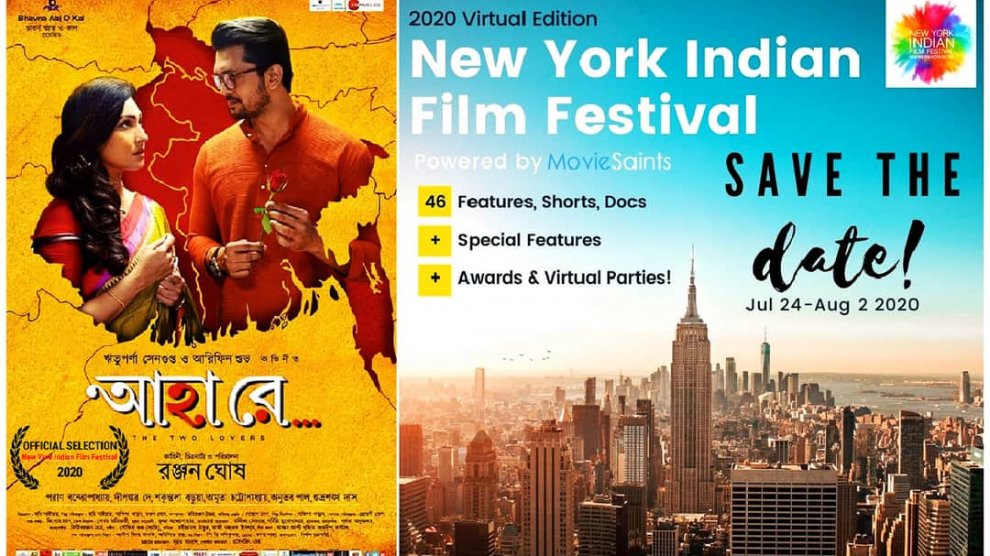
Art is an universal medium of expression, and its prevalence in filmmaking comes hand in hand with its importance in cookery in Ranjan Ghosh’s latest offering, Ahaa Re. The film, which is currently being screened at the prestigious New York Indian Film Festival, tells the story of a journey of a man who comes to the city of joy, Kolkata, from Dhaka, Bangladesh, when he tries to resurface from the empty pangs of a lost love. Raja is a chef, and the reason he comes to Kolkata is to run the kitchen of a restaurant owned by one of his close friends. He has the interesting habit of getting to know the city through the kinds of culinary delicacies it has to offer. Being new to the city, he opts for a particular food home delivery service to quench his diurnal hunger pangs. But this leads to something unprecedented. Raja meets Basundhara, a middle class woman from an ordinary family, whose excellence in the art of cooking make her all the more special to him. He becomes close to Basundhara’s family, and we are witness to a heartwrenching journey comprising of relationships, love, loss, cravings, food and fantasies.
This film is a paradise of performances, where Paran Bandyopadhyay excels in the brilliant and nuanced portrayal of Basundhara’s father-in-law. He is a gem of a performer, and this film provides a platform for him that he utilises to the fullest. Arifin Shuvo is picture perfect as Raja, the chef overcoming from a crisis to indulge himself in a new one. He has a control over his character that is so well executed that Raja emerges to be somebody about whom one will want to know more after the end credits roll. Rituparna Sengupta’s Basundhara is the most intensely written character of the narrative. Her portrayal of the simpleton with a troubled past gives soft nudges to the tear ducts. Shubhro Sankha Das is brilliant as Bappa, the endearing brother-in-law to Basundhara. His relationship with Raja is one factor for which Ahaa Re could be watched a number of times.

The film is a very well written portrayal of a love story initiated due to taste bud responses. The background score is beautiful. It adds to the emotional undertone, as do the songs. This is that rare sweet taste that you get amidst the salty extravaganza of a particular biscuit from the bakeries of the city of Kolkata. It’s the satisfying aftertaste of a hand blended chocolate cake.
There are two sequences, which are made with utmost care and a conscientious approach. The sequence where Raja and Basundhara meet for the first time, it’s over an argument about the measurement of salt in a particular dish served in a food joint. While the argument is childish, the sequence gives us an idea that the film is true to its heart. Food is the connection between the two characters, and it’s through food that they connect. That connection between Raja, Basundhara and delicacies is maintained throughout the film till the very end. Another sequence is when the father-in-law of Basundhara explains the woman’s past crises to a baffled Raja. Paran Bandyopadhyay is so endearing in that act, that we see through his outer shell and delve deep into his conscience in a matter of few seconds.
Basundhara’s crisis points are very maturely explained, thanks to the writer-director Ranjan Ghosh. Rituparna adds to the mature outlook of the character. The sequence where she takes all the responsibilities for the crises is crafted to be very personal, with close shots. But, most of the sequences where her fight from the struggle or rejuvenation is portrayed are shot in a wider ratio. It might not be intentional, but I observed this and loved it.
The film is currently available for you to watch in the New York Indian Film Festival. The festival will go on till the 2nd of August 2020.
















Add Comment